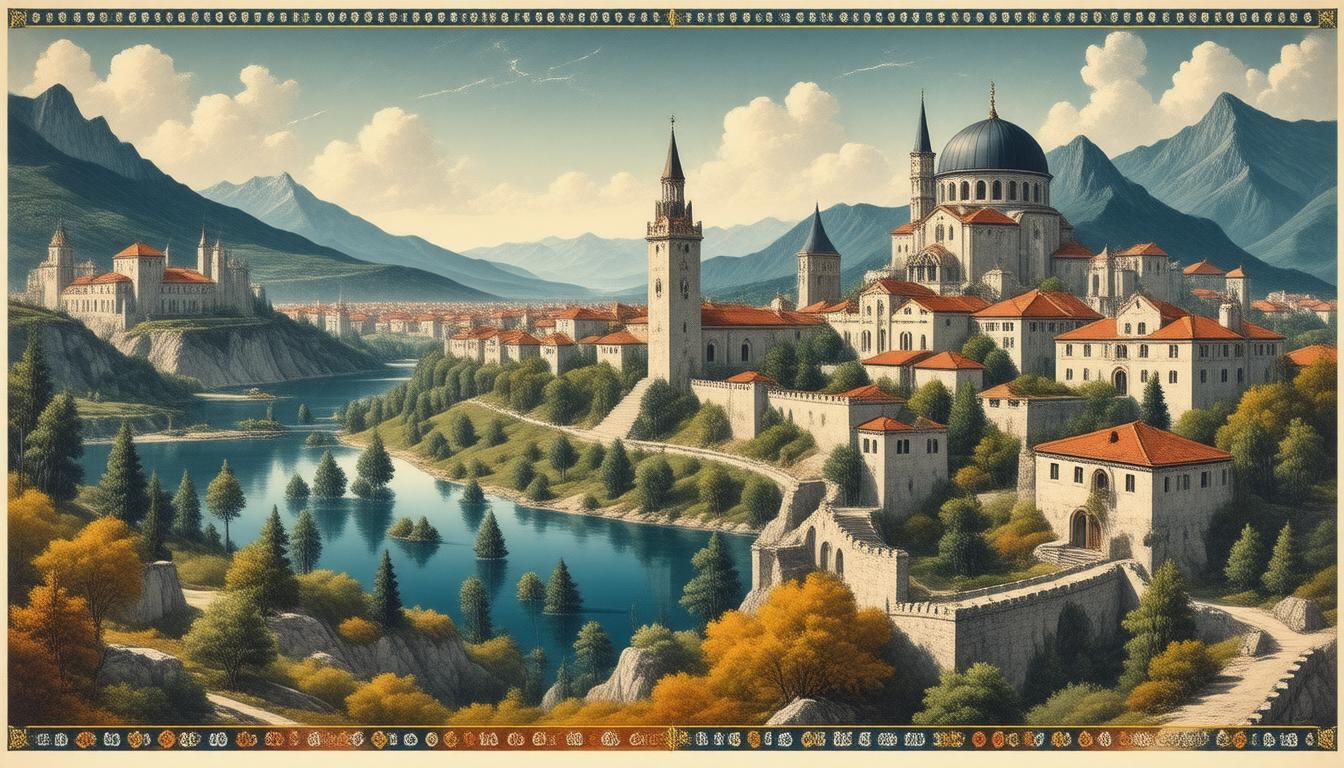The history of Bosnia and Herzegovina is a tapestry woven with threads of diverse cultures, religions, and national identities. The profound transformation of this region, particularly in relation to the spread of Islam, offers a captivating exploration into its complex socio-political and religious landscape. This article seeks to unravel the story of how Bosnia became predominantly Muslim and the various forces that contributed to this significant shift.
Historical Background: Setting the Stage
Before examining the arrival and spread of Islam, it is essential to understand the historical context of Bosnia. In the Late Antique period, the region was settled by Slavic tribes, and by the 8th century CE, Bosnia emerged as a small state. Over the centuries, it developed into a principality, and during the 14th century, it became a client kingdom under the rule of the Kotromanić dynasty, maintaining a predominantly Catholic populace while also including Orthodox Christians.
Interestingly, there existed a unique sect known as the Bosnian Church. Viewed as heretical by both Catholic and Orthodox institutions, this group represented a distinct form of Christianity which would later intertwine with the region’s conversion to Islam.
The Ottoman Conquest
The turning point in Bosnia’s religious landscape began in the 15th century with the Ottoman Empire’s conquest. The fall of Bosnia at the Battle of Kljuc in 1463 marked the end of the independent Bosnian state and ushered in a new phase of Ottoman administration. This period is notable for significant social, political, and religious upheaval. As the Ottomans consolidated their power, large-scale migrations of both Orthodox and Catholic populations occurred, altering Bosnia’s demographic fabric.
Theories of Islamization: Understanding the Shift
The spread of Islam in Bosnia is often framed through various theories. One prevalent notion, particularly among nationalist historiographies, suggests that the region’s original inhabitants—Orthodox Serbs and Catholic Croats—were forcibly converted to Islam. However, this perspective is challenged by contemporary historians who argue that many people converted voluntarily, seeking social mobility and the benefits that came with being part of the Ottoman administration.
Another theory posits that the Bosnian Church’s members found resonance with Islam and chose to convert to escape the ecclesiastical dominance of the Catholic monarchy. While there may be elements of truth in this assertion, the general historiographical consensus indicates that the Islamization of Bosnia was primarily an organic process influenced by various structural and economic factors.
The Role of Sufi Orders
Central to the Islamization process were the Sufi order members who traveled with the Ottoman military. These mystics established networks and centers of influence in urban areas, promoting Islamic practices and integrating them into the social fabric of Bosnian life. The Sufi tariqas (orders) not only facilitated conversion but also provided economic benefits, which were particularly enticing during a time of social dislocation and economic transformation.
As Bosnia became more integrated into the Ottoman Empire, it experienced an array of administrative and legal reforms, further embedding Islamic practices into everyday life. The urban centers, especially, became hubs of Islamic culture, where literature and education flourished in both Arabic and regional languages.
Islamic Life and Sufism in Bosnia
Initially, the Islamization of Bosnia was primarily an urban phenomenon concentrated in cities such as Sarajevo, Banja Luka, and Mostar. Over the course of two centuries, the influence of Islam spread beyond urban centers into rural areas, reaching its zenith in the 16th century.
A key feature of this period was the emergence of Aljamiedo—literature in the local language but written in Arabic script. This not only highlighted the integration of Islamic thought into local culture but also facilitated the spread of Islamic practices and beliefs among the populace.
Pilgrimage literature, especially concerning the Hajj, emerged during this era, detailing the spiritual journey to Mecca and solidifying a sense of Islamic identity among Bosniaks. The social standing attained by those who completed their pilgrimage illustrates the deep cultural impact that Islamization had on Bosnian society.
Economical and Administrative Changes: Structuring Islam in Society
The economic transformation during the Ottoman period was crucial in solidifying Islam’s presence in Bosnia. Guilds, particularly the Akhis linked to Sufi orders, formed the backbone of urban socio-economic life, facilitating trade and providing administrative support. The legal framework of Hanafiyya, the Ottoman school of Islamic law, regulated daily activities and fostered an environment conducive to conversions, as it introduced social benefits tied to religious affiliation.
As the Janissaries fortified Bosnia’s military structure, a new class of Muslim landowners emerged, contributing to local governance and socio-political stability. These dynamics allowed for the creation of a distinct Bosniak identity among Muslim elites, who adapted to the evolving political landscapes while maintaining cultural autonomy.
The Tanzimat Reforms and the Habsburg Era
By the 18th century, Muslims constituted the largest religious group in Bosnia. However, the Tanzimat reforms of the 1830s aimed at modernizing the Ottoman state led to significant changes, including attempts to curtail the power of established regional elites. The conservative Muslim landowners, facing threats to their influence, responded with resistance, leading to uprisings such as the Bosnian uprising of 1831. The eventual annexation of Bosnia by the Austro-Hungarian Empire in 1878 further complicated the relationship between the Bosniaks and their ruling authorities. While some opted for migration to the Ottoman Empire, others sought to adapt to the new regime, preserving cultural autonomy while navigating the intricacies of identity formation.
Conclusion: The Complexity of Bosnian Identity
The transformation of Bosnia into a predominantly Muslim region is a complex narrative shaped by historical events, socio-economic changes, and religious dynamics. The intertwining of Islam with Bosnia’s cultural identity has resulted in a rich heritage that reflects the region’s diverse history. As Bosnia continues to navigate its multifaceted identity, the lessons learned from its past remain pivotal in understanding the intricacies of coexistence and cultural plurality that define this exceptional corner of the Balkans.
This transformation story serves as a reminder that Bosnia is not just a geographical entity but a living testament to the enduring legacy of its diverse communities, cultures, and faiths. The Bohemian proverb reiterates this blend of historical and cultural multiplicity, showcasing how, despite different paths, people find ways to coexist with grace and wisdom in their shared human experience.
Ready to get in the game and start making money on Pump.fun? DogWif Tools is the #1 memecoin sniper tool for becoming a Pump.fun millionaire. Get DogWif Tools today and become a memecoin dev!








